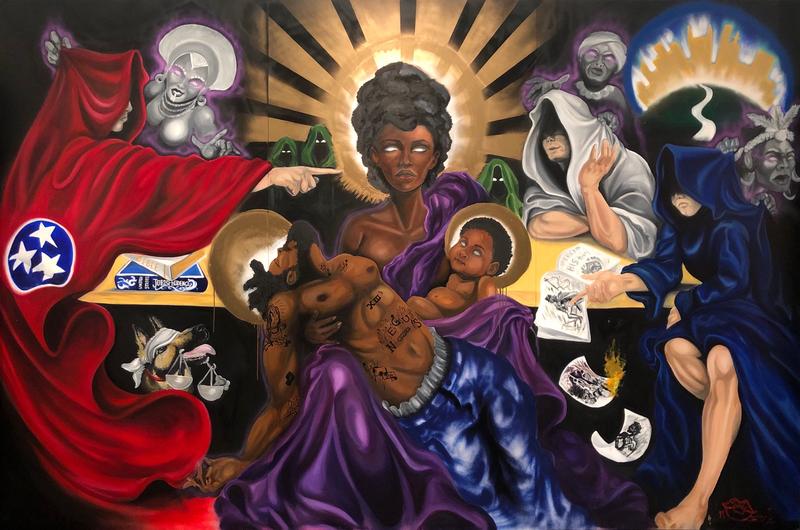
Along with the population surge in Nashville, there’s been unprecedented growth in public art. If you’ve been to the Gulch lately, you’ve probably seen the line wrapping around the block to take a picture with “the angel wings” — the WhatLiftsYou mural by Kelsey Montague.
But, the most popular pieces don’t necessarily capture the heart of the city, says Katie Delmez, curator at the Frist Art Museum.
“I found myself in North Nashville and was really struck by what I saw there versus in other parts of town,” she said.
Delmez took on the task of convincing some of these local artists to be a part of the new exhibit Murals of North Nashville Now. The 12 artists involved in the project are young and black, and their works represent the neighborhood they’re from.
Take Elisheba Israel Mrozik, whose piece “Unmask ‘Em” is centered around a woman of color: a Virgin Mary-like woman surrounded by three hooded figures in red, white and blue respectively.
“She’s a black woman, and in her arms, she’s holding her child and also a man who could be her brother, father or son, who is not responsive and laying supine like Jesus after coming off the cross,” Mrozik explains.
Mrozik is a well-known tattoo artist in Nashville, and she incorporates that art form into the Jesus figure. He’s tattooed with symbols of black history, like the year the first slave ships arrived in America.
“It tackles the ages old myth of, ‘It’s all your fault. You need to pull yourself up by your bootstraps’ … and stereotypes and tropes that are laid upon people of color every day,” Mrozik said.
Across from Mrozik’s mural is a colorful wall of airbrushed names, like you’d see at the state fair outside of a T-shirt booth. But these names are Brandon Donahue‘s memorial to Nashville’s 2018 homicide victims. They include Daniel Hambrick, who was killed last year by a Metro police officer.
Delmez says striking murals like this one can force a casual art appreciator to face social justice issues.
“Whether you want to or not, anybody that walks by can’t help but to look at what they’re seeing and to digest it and to be moved by that,” she said.
The eight typically outdoor art pieces can be seen within the Frist’s four walls through January 2020.

